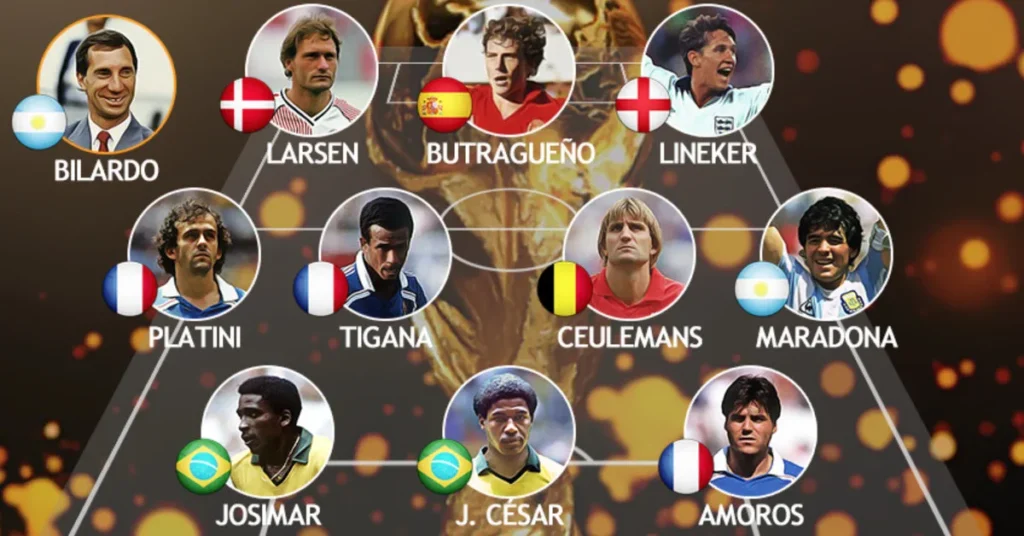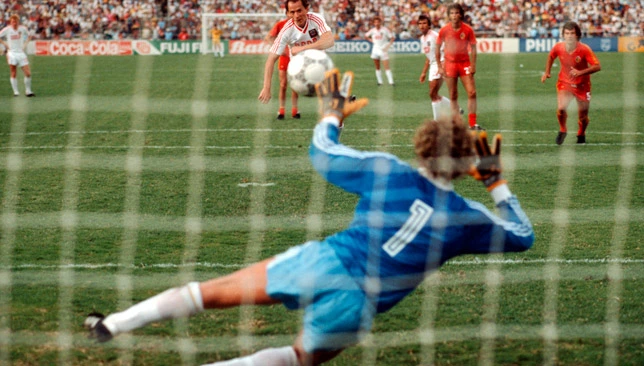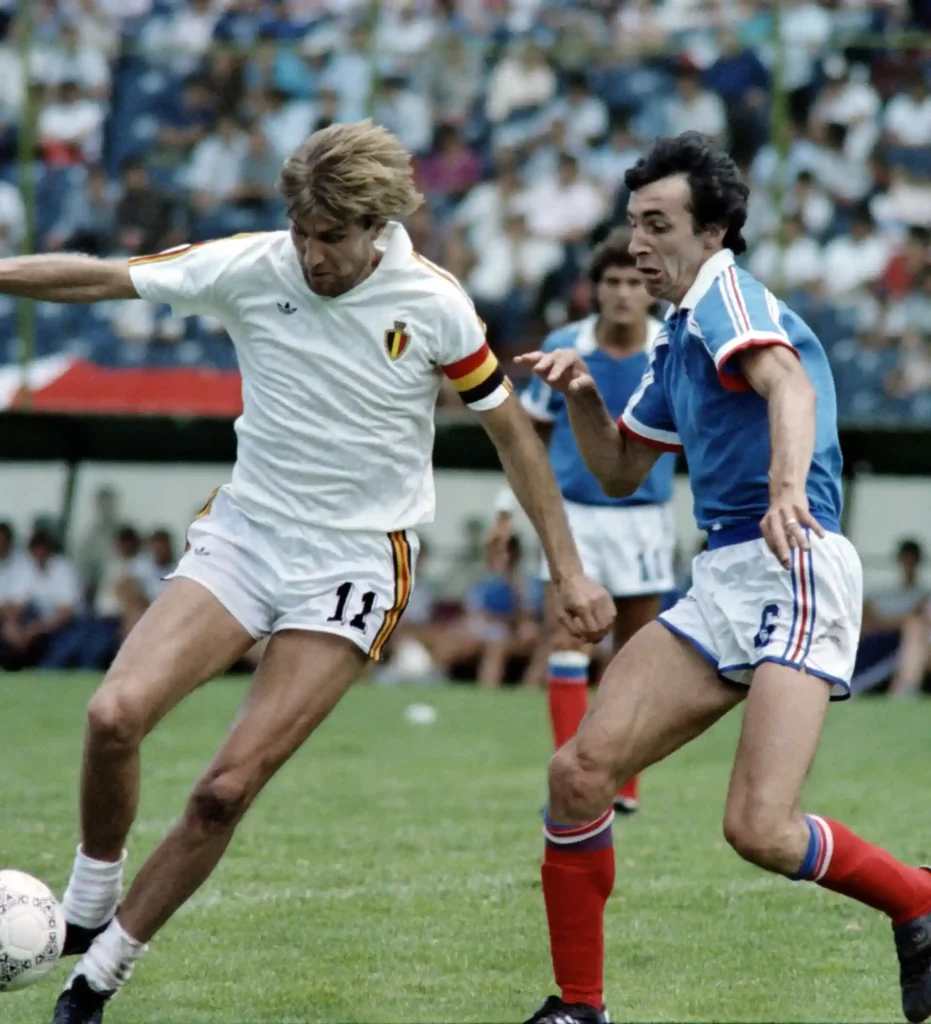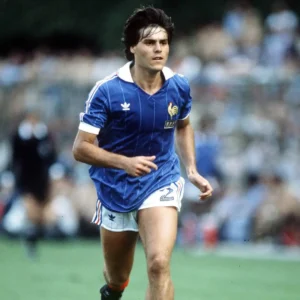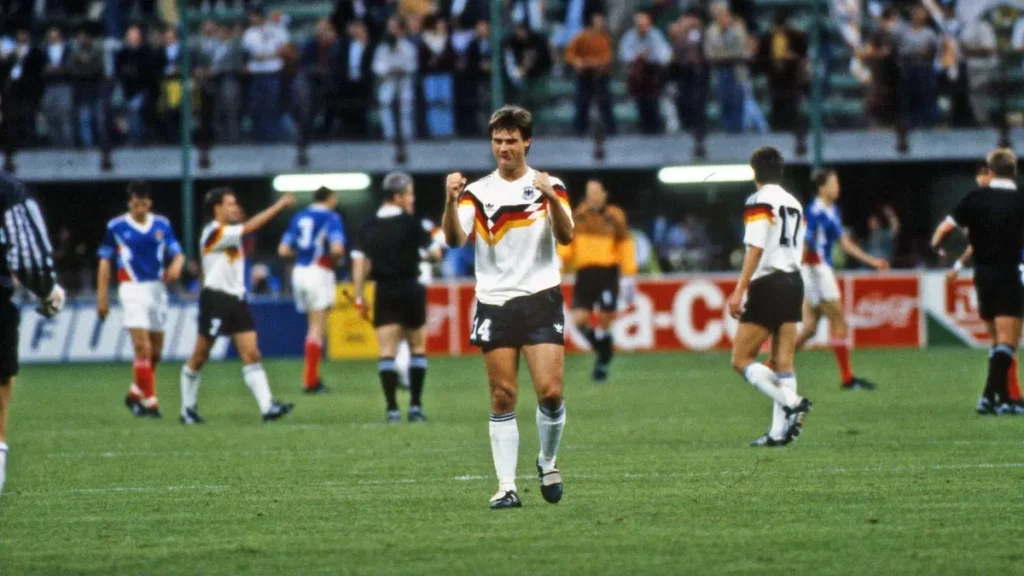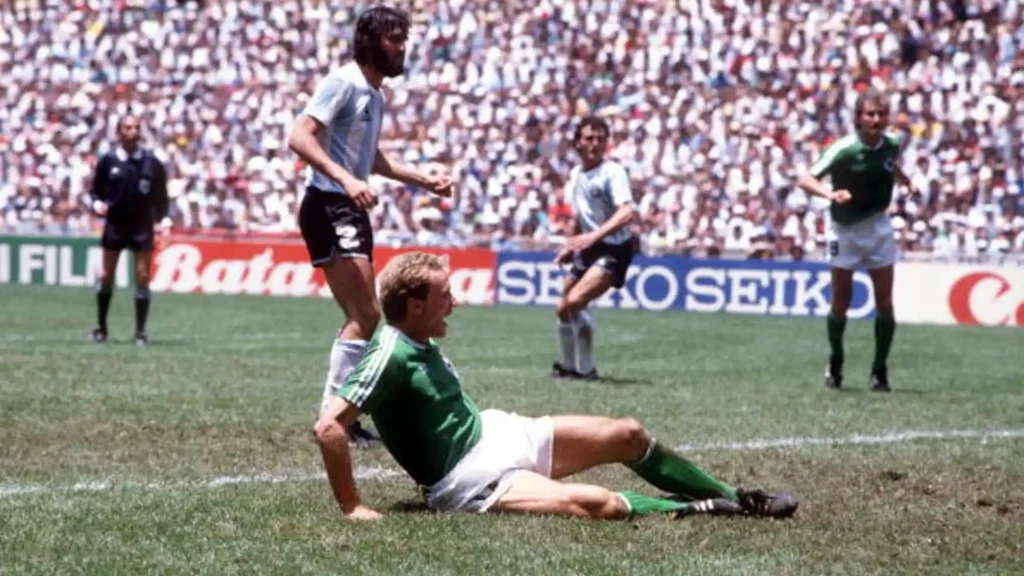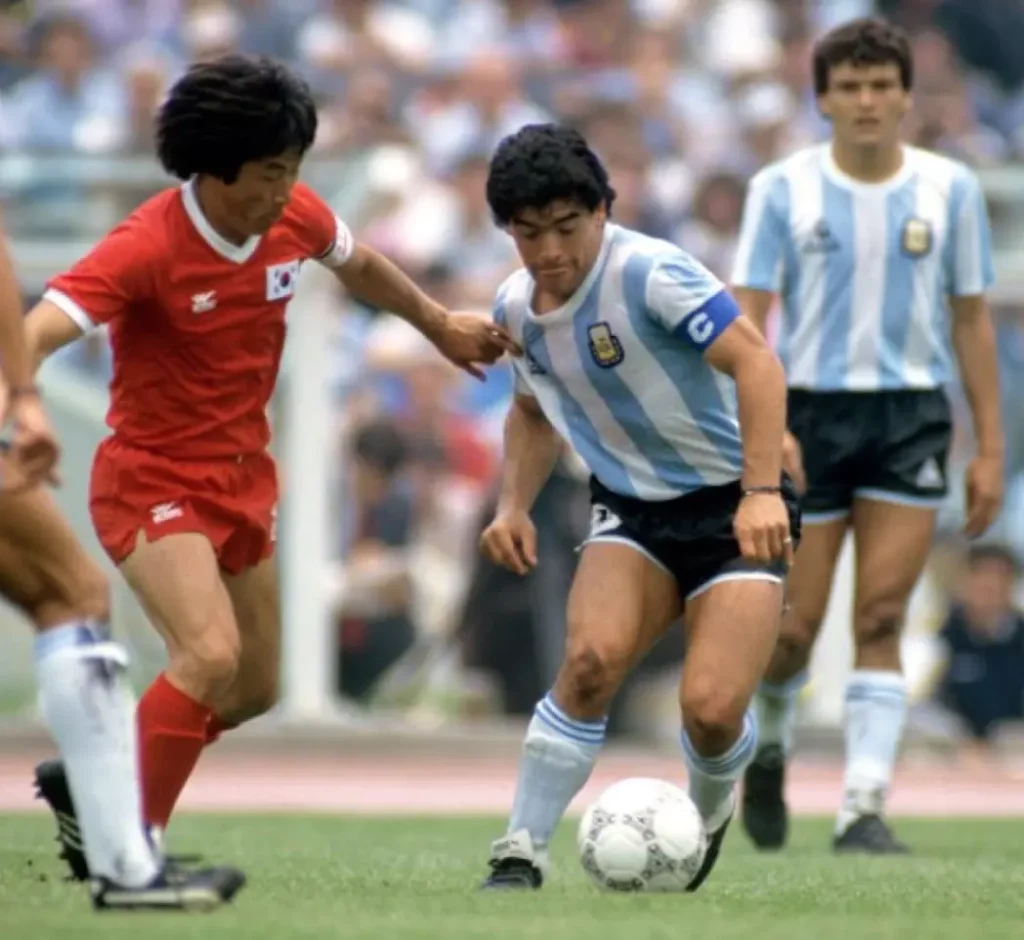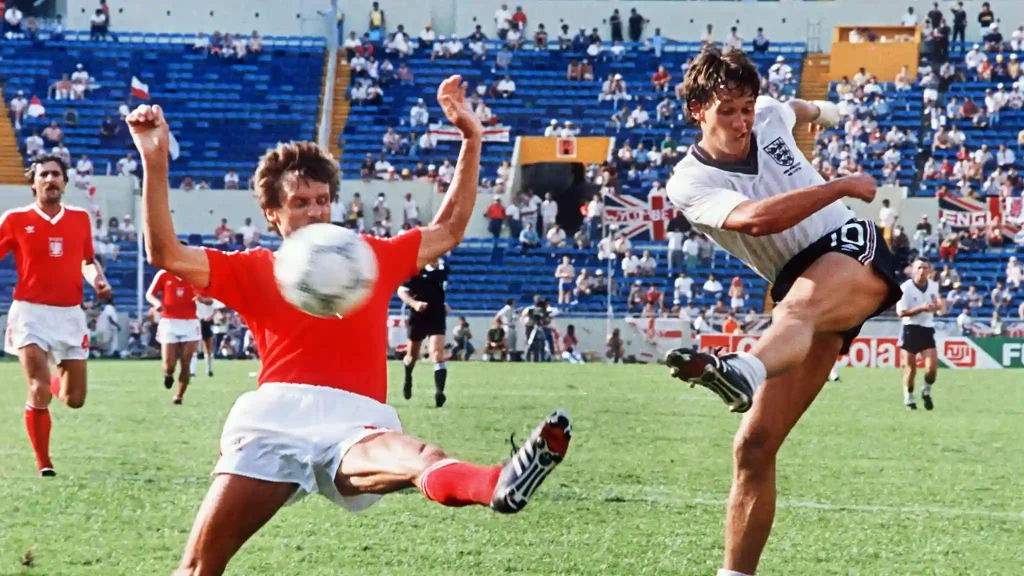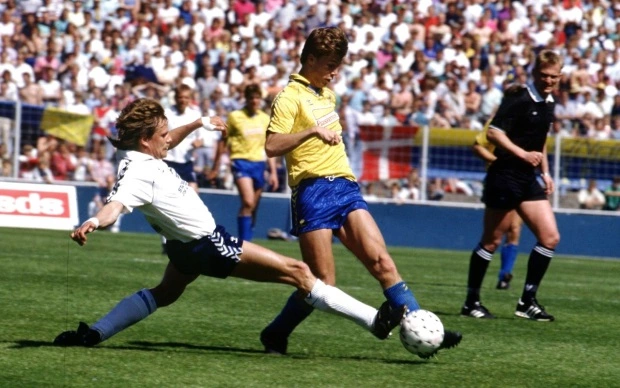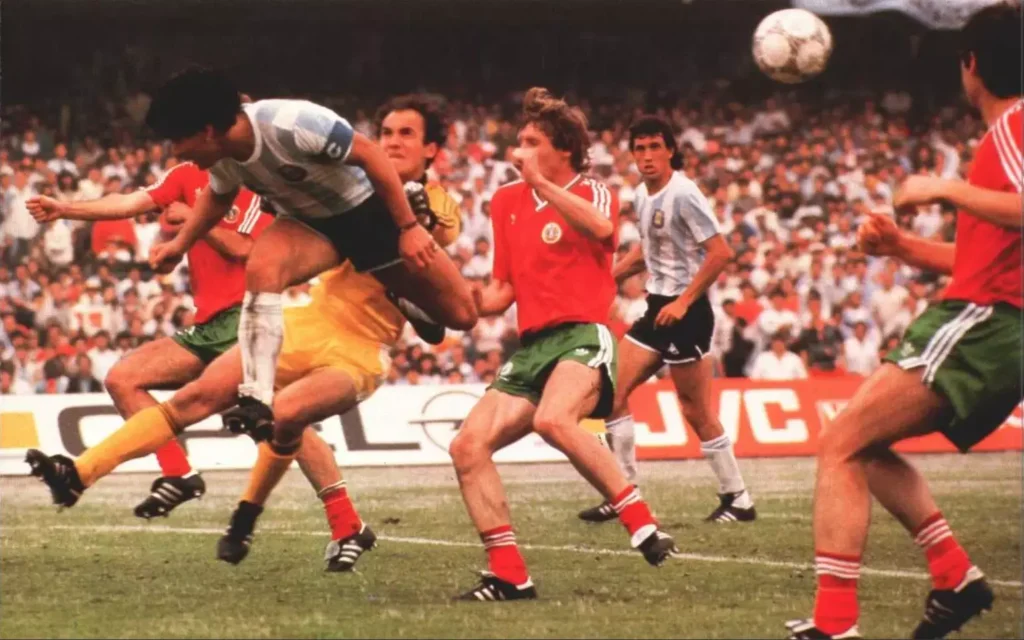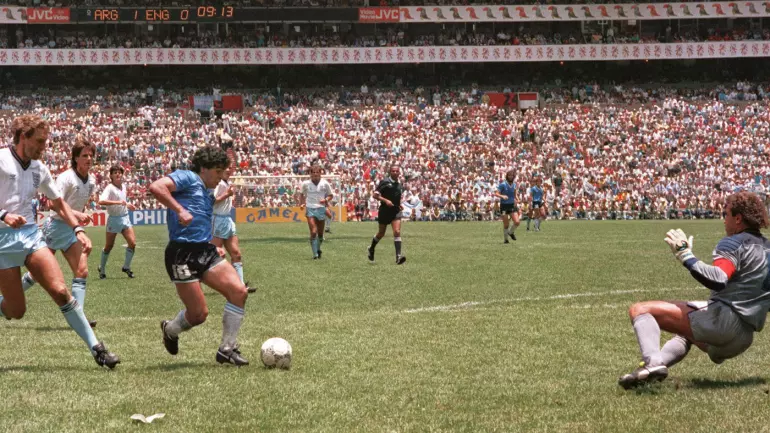According to some, Mexico 86 was the last truly great World Cup. A tournament filled with drama, storylines, and, of course, stellar players characterized by prolific goalscorers like Emilio Butragueno, Gary Lineker, and Careca.
World Cup fans were dazzled by creative geniuses like Enzo Francescoli, Michael Laudrup, Enzo Scifo, Michel Platini, and Zico. In this article, we discuss the most productive players for each position on the soccer field.
Goalkeepers Who Stood Out In Mexico 86
Belgium’s goalkeeper Jean Marie Pfaff was beaten 15 times. All the same, he ranked among the best soccer goalkeepers of these World Cup Finals. In particular, in the games against the USSR and Spain, Jean Marie Pfaff preserved his team from losing by making miraculous saves. He was one of the few goalkeepers in Mexico 86 who showed no difficulties dealing with crosses.
Peter Shilton’s international experience provided the English defense with additional stability. Even in the most hectic phases, he radiated calm and confidence. Peter Shilton commanded his goal area better than all his fellow goalkeepers.
From the African continent, the Moroccan goalkeeper Badou Zaki had already made a good name for himself for a long time. In Mexico 86, he proved to be one of the real discoveries. Badou Zaki was only beaten once during the Group matches, thanks to his excellent positioning and above-average reflexes.
In the Second Round encounter with Germany, the poorly placed Morrocan wall allowed the Germans to score from a free-kick shortly before the final whistle.
The German keeper Harold Schumacher made an outstanding impression until the Final of Mexico 86. He directed his defenders in a superior style and cleared many delicate situations outside the penalty area with quick interventions.
But it was just in the Mexico World Cup 1986 Final that he was not at his best. He was partly to be blamed for all three goals against.
After a long time, Brazil came up again with a first-class goalkeeper. During the first games, Carlos remained unbeaten. After that, however, Brazil’s only goal to concede was their elimination from Mexico 86. And Carlos played a central part in it.
In the penalty shoot-out, he anticipated the angle chosen by Bruno Bellone. After the ball hit the post, it bounced back onto Carlos’s back and rolled over the goal line. This unusual situation dramatically showed how good luck and bad luck lie together in football.
The Paraguayan Roberto Fernandez was among the best goalkeepers in the Mexico World Cup 86 tournament. Worth noticing is that he set up a goal for his team directly through one of his long goal-kicks.
The Soviet goalkeeper Rinat Dassaiev faced a particularly difficult and ungrateful situation. He was hardly ever challenged during the Group games. Only against France he conceded a goal, which was superbly taken and completely unstoppable for him.
In the Second Round encounter with Belgium, he hardly ever had the opportunity to distinguish himself. Each shot on his goal went into the net!
It wasn’t easy to judge the real qualities of Nery Pumpido in Mexico 86. The Argentine goalkeeper was shielded so well by his defenders that he had to interfere but rarely. It was striking, however, that Nery Pumpido organized his defense by constant orders and launched some dangerous breaks with his long throw-offs. In addition, he needed help to conceal some uncertainties in dealing with high crosses.
Denmark’s manager Piontek had selected Lars Hogh only as his third goalkeeper before the tournament. Against Germany, he showed some great saves and was therefore nominated again for Denmark’s Second Round match. But against Spain, he had to concede five goals since his defenders poorly supported him.
Mexico 86 Best Central Defenders
The Danish team senior Morten Olsen showed a top-quality performance at this World Cup. He interpreted his role as a sweeper in a very offensive sense.
Morten Olsen fed his team-mates with long passes from the back. His runs with the ball allowed the Danes to have a permanent superiority in midfield.
Against Germany, the central defender picked up the ball in his half and started a solo run that the German defense could stop only by a foul inside the penalty area.
In the place of the injured Antonio Macedo, the Spanish midfield ace Ricardo Gallego had to assume the sweeper role. He directed his defense brilliantly and often launched dangerous breaks with precise passes.
The Belgian Michel Renquin was used for the first time in the third game. His significant experience positively affected the young and reckless defenders in front of him and gave them the necessary security.
It was only thanks to him that Georges Grun and Stephane Demol could risk their offensive actions without causing unnecessary difficulties to the Belgian defense. Time and again, he stopped gaps at the back, and more than once, Michel Renquin managed to avert imminent goals through his exceptional commitment.
Karlheinz Förster was the most reliable German player of Mexico 86. He noticeably reduced the sphere of action of his direct opponents and condemned them all to inefficacy. He remained calm even in the most hectic situations and thus provided the German defense with extraordinary stability.
Maxime Bossis, the French record international, displayed first-class performances also as a central defender, a position not very appreciated by him.
His astounding reaction speed, a flair for tackles, and outstanding qualities in the air allowed him to neutralize Belanov Altobelli, Careca, and Karl-Heinz Rummenigge. Moreover, Maxime Bossis still had the strength to participate in the French attacking play.
Only at the very last moment, Julio Cesar was selected for the Brazilian team, taking the place of former team captain Oscar. He distinguished himself by his calm authority and his intelligence. In most cases, Julio Cesar’s excellent anticipation allowed him to dispossess his direct opponents without fouls.
Several times he also gave samples of his enormous striking power from long-range. During Bulgaria’s qualification campaign, central defender Georgi Dimitrov proved to be the most dangerous goalscorer (three goals).
In Mexico 86, he failed to score, but he turned out to be the real playing personality within the East European team. With his runs from deep, he repeatedly succeeded in driving forward his team-mates.
Mexico’s central defender Fernando Quirarte was the actual organizer of his defense. He seized every opportunity to get involved in the Mexican attacks. With two goals, he became this tournament’s most dangerous central defender.
The excellent partnership of the Moroccans El-Biaz and Bouyahiaoui laid the foundations for the first qualification of an African team for the Second Round.
Best Full Backs Of Mexico 86
The French Manuel Amoros proved to be one of the most accomplished fullbacks of this tournament. He took care of all his direct opponents on the defensive, thanks to his quickness.
In midfield, his agility and his excellent skill were useful to him. He also knew how to disengage himself from difficult situations with elegant dribbles. He concluded his numerous advances down the flanks by precise crosses and dangerous shots.
Josimar had yet to become a squad member of the Brazilian World Cup squad. But since Leandro called off shortly before the departure for Mexico 86, Josimar was selected subsequently.
Till Edson’s elimination due to injury during the second game, he had to remain on the substitutes’ bench. But already in his first match against Northern Ireland, he scored a spectacular goal.
Against Poland, he performed even better and shot his second goal after a dazzling dribble. He became the most successful fullback of the Mexico World Cup Finals with these two goals.
Blessed with excellent running power and zeal, Thomas Berthold brought much dynamism into the German attacking play with his powerful rushes down the right flank.
Despite being still a little inconsistent in his performances, his risky advances stood out pleasantly from the exaggerated safety first attitude of some of his team-mates.
Eric Gerets, used as a sweeper at his club side PSV Eindhoven, returned to his original spot as a fullback in the Belgian team. The vibrant international could cope with this change of position immediately. With his reliability and exceptional fighting strength, Eric Gerets proved again to be a vital player in the Belgian squad.
Richard Gough was the actual driving force in the Scottish team in Mexico 86. He seized every opportunity to run forward on the right flank. He concluded his irresistible breakthroughs on the wings by sharp crosses.
The Scottish full back tried to take the central attacking position where his extraordinary qualities in the air meant a constant danger to the opposing defense.
Julio Alberto did not tackle as hard as Jose Antonio Camacho, but his spectacular rushes on the left side provided the Spanish attacks with additional pressure. In addition, his above-average fastness was particularly useful to him when his team operated by quick breaks.
Huh Jung-Moo, the left fullback of the South Korea Republic, had become familiar with European soccer while playing with PSV Eindhoven some years ago. Due to this international experience, he did not lose control even in the most hectic situations. His calm used to have a positive effect on his nervous team-mates.
But when the South Korean team was behind, he advanced incessantly on the left side, thus giving a signal to risk everything and to strive for equalization with all their might. They succeeded in doing so against Bulgaria.
Best Midfielders Of Mexico World Cup 1986
The number of midfield players in a team has continuously increased over the past few years. This means that their field of activity widens, but at the same time, it is more difficult to define the different roles.
As midfield liberos, the following players could have fulfilled a more spectacular but essential task. Sergio Batista played this part excellently in Argentina’s team throughout Mexico 86.
Elzo constantly stopped the gaps in Brazil’s rearguard and took on additional running work for his more famous midfield colleagues.
In the Belgian midfield, young Stephane Demol showed good promise.
The other Paraguayan midfielders could devote themselves unconditionally to the offensive only thanks to Nunez’s brilliant performances as an interceptor.
Sergei Aleinikov confined himself to defensive tasks in this role and often ran wide to support the Soviet attack. With his exceptional displays, Victor contributed much to the surprising performances of the Spanish team.
Nasho Sirakov’s qualities in the air were not only for the benefit of his defense. He also headed home the Bulgarian equalizer against Italy.
Abdelmajid Dolmy’s exemplary commitment facilitated the work of the Moroccan defense.
In various teams, the defensive work in midfield was assigned to two players. In the French team, Luis Fernandez performed excellently initially but wilted during the tournament.
On the other hand, Jean Tigana primarily excelled with his universally known midfield colleagues and proved to be one of the best players of the Mundial. Besides his defensive functions, he always found time and strength to support the French attacking play effectively.
Soren Lerby was the tireless driving force of the Danish attacking play during Mexico 86. Spectacular displacements of the game and dangerous shots from long range were characteristic of his dynamic style of play.
Lothar Matthäus turned out to be the central figure in the German midfield. He used to push forward his team-mates in critical situations with untiring commitment.
Mohamed Timoumi’s brilliant skill determined the Moroccan offensive play. Magath concluded his career as a football player with a convincing performance against France.
It was only when Bryan Robson and Ray Wilkins had to be replaced that Glenn Hoddle began to have an impact on the English game. Tomas Boy’s vision and intelligence caused him to be the unrestricted leader of the Mexican team.
Pavel Yakovenko, disposing of intelligent control, operated slightly retreated in midfield and, from there, provided the Soviet game with the necessary inspiration. He showed a particular flair for sudden changes of pace.
Thanks to his extraordinary vision, Park Chang-sun demonstrated impressively that there are outstanding football players in Asia. During Mexico 86, strong midfield players were also used on the flanks.
By their stunning dribbles and firm crosses, the Soviets Ivan Yaremchuk and Vasiliy Rats were a constant worry to the opposing defense.
Frank Arnesen’s breakthroughs on the wings often created confusion in front of the opponent’s goal. He demonstrated his versatility against Scotland when he immediately got along with his new position in the middle and supplied the Danish attacking play with decisive impulses.
Trevor Steven and Steve Hodge, working hard down the flanks, took a significant share in the sudden improvement of the English displays.
No other Mexican player had a more significant impact on his team’s performance than Manuel Negrete, who often operated on the wings.
The Belgian Jan Ceulemans, a former striker, frequently receded to the midfield. He actively participated in the construction of the attacking moves and suddenly rushed forward when he discovered a gap in the opposing defense. With three goals, Jan Ceulemans turned out to be the most successful midfield player of Mexico 86.
When performing his quick runs from midfield, Jorge Burruchaga surprised the opponent with his sudden changes of direction and pace. Furthermore, his ability to keep the ball while penetrating the densely populated defensive lines of the opponent provided the Argentine attacking play with additional dynamism.
At Fluminense, Julio Cesar Romero plays up front, in the Paraguayan side he acted in midfield. His attacking experience was for the benefit of his new role since he scored the central part of Paraguay’s goals.
The Forwards Of Mundial Mexico 86
Mexico 86 was a World Cup for the forwards. Nobody had foreseen that suddenly so many talented players would achieve the breakthrough on the international stage. The English manager selected Gary Lineker, although he is not a typical British center forward.
His way of playing is based on quickness and agility than strength and dynamism. He goes for every ball close to him and reacts on every rebound. With six goals, Gary Lineker became the top scorer of this tournament.
Emilio Butragueno represented the style of a modern goal-getter. His refined skill allowed him to do everything with the ball. Temporarily, he receded to the midfield to escape the close marking by the opposing defense. Then he suddenly went away from his opponent thanks to his tremendous acceleration and aimed directly at the adverse goal.
Denmark’s attacking duo Preben Elkjaer-Larsen and Michael Laudrup counted among the best forwards of the 1986 World Cup. The two strikers complemented one another excellently.
The powerful and dynamic Elkjaer could hardly be stopped when he went away and penetrated the opponent’s defensive zone. On the other hand, the very skillful Laudrup dribbled elegantly to his opponents when displaying one of his solo runs. Even at full speed and under hard pressure he managed to lay on opportunities for his teammates by surprising passes.
The lightning-quick Ihor Belanov was one of the “revelations” of the Mexico 86 tournament. As the foremost striker of the Soviet team, he constantly changed his position and rushed at every ball.
He often forced his way toward the opposing goal thanks to his tight control and clever feints. With four goals and six assists, he ranked among the top scorers in Mexico.
Careca’s outstanding skill allowed him to participate in the 208 magnificent moves of his Brazilian team-mates. Through his permanent presence and his ability to play double passes, he set up various chances, mainly for the Brazilian midfield players.
Valdano distinguished himself by the most extensive range of passes during this World Cup. His two-footedness allowed him to advance alternately on the right and the left flank. His remarkable qualities in the air came particularly into play after the frequent Argentine free-kicks and corners.
Yannick Stopyra did not have a firm place in the French team, either. Yet, within three weeks, he developed into one of the most dangerous strikers in the Mexico 86 tournament.
In Italy’s team was Alessandro Altobelli. His four goals, however, were not sufficient to bring the ‘Azzurri’ into the Quarter-Finals. Maradona was considered the best player in Mexico 86.
Diego Maradona scored five of the fourteen Argentine goals and had a hand in five other goals of his team-mates. All this showed impressively his overall abilities: ingenious in directing his side and in finishing!
